
Building operations company Johnson Controls (NYSE:JCI) reported Q4 CY2024 results topping the market’s revenue expectations, with sales up 4.2% year on year to $5.43 billion. Its non-GAAP profit of $0.64 per share was 8.5% above analysts’ consensus estimates.
Is now the time to buy Johnson Controls? Find out by accessing our full research report, it’s free.
Johnson Controls (JCI) Q4 CY2024 Highlights:
- Revenue: $5.43 billion vs analyst estimates of $5.28 billion (4.2% year-on-year growth, 2.7% beat)
- Adjusted EPS: $0.64 vs analyst estimates of $0.59 (8.5% beat)
- Adjusted EBITDA: $748 million vs analyst estimates of $728.4 million (13.8% margin, 2.7% beat)
- Management raised its full-year Adjusted EPS guidance to $3.55 at the midpoint, a 2.9% increase
- Operating Margin: 9.7%, up from 7.8% in the same quarter last year
- Free Cash Flow was $133 million, up from -$338 million in the same quarter last year
- Organic Revenue rose 10% year on year (-1% in the same quarter last year)
- Market Capitalization: $51.02 billion
"I am proud of another strong quarter delivered by the Johnson Controls team, which reflects our successful strategy to simplify our portfolio and position our Company as a leading pure-play building solutions provider," said George Oliver, Chairman and CEO.
Company Overview
Founded after patenting the electric room thermostat, Johnson Controls (NYSE:JCI) specializes in building products and technology solutions, including HVAC systems, fire and security systems, and energy storage.
Commercial Building Products
Commercial building products companies, which often serve more complicated projects, can supplement their core business with higher-margin installation and consulting services revenues. More recently, advances to address labor availability and job site productivity have spurred innovation. Additionally, companies in the space that can produce more energy-efficient materials have opportunities to take share. However, these companies are at the whim of commercial construction volumes, which tend to be cyclical and can be impacted heavily by economic factors such as interest rates. Additionally, the costs of raw materials can be driven by a myriad of worldwide factors and greatly influence the profitability of commercial building products companies.
Sales Growth
A company’s long-term performance is an indicator of its overall quality. While any business can experience short-term success, top-performing ones enjoy sustained growth for years. Unfortunately, Johnson Controls struggled to consistently increase demand as its $23.17 billion of sales for the trailing 12 months was close to its revenue five years ago. This fell short of our benchmarks and signals it’s a low quality business.
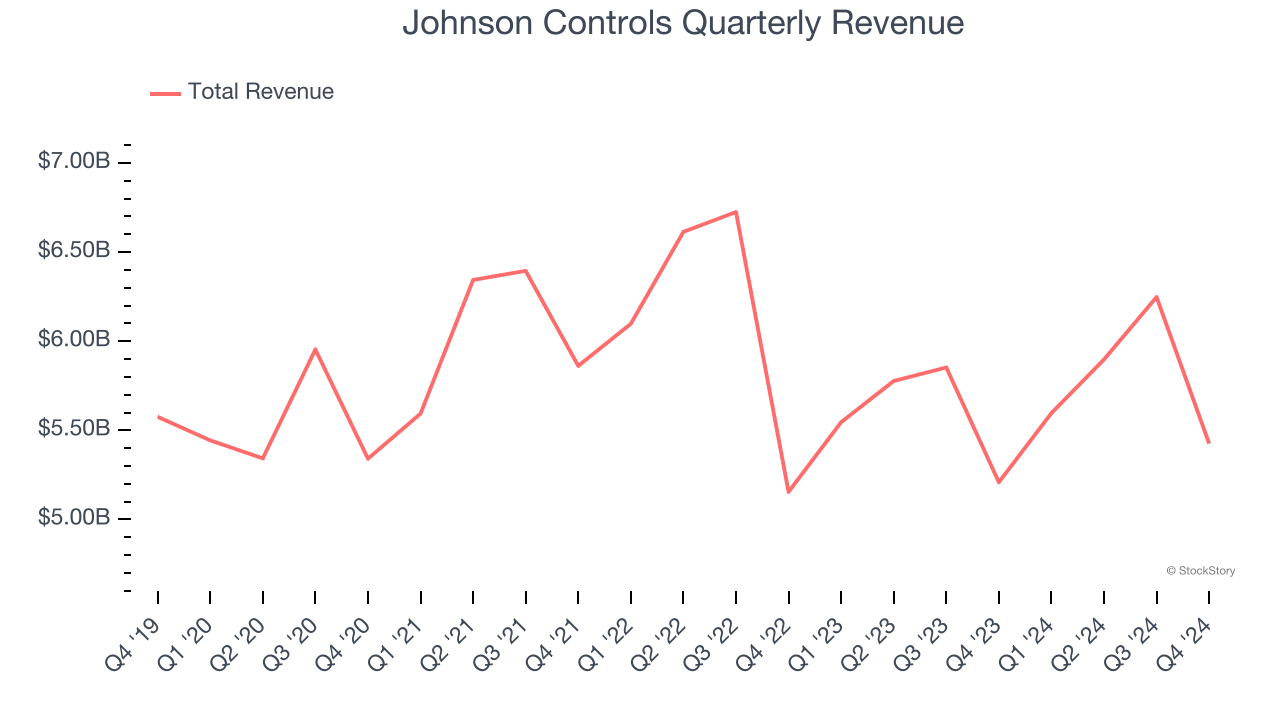
We at StockStory place the most emphasis on long-term growth, but within industrials, a half-decade historical view may miss cycles, industry trends, or a company capitalizing on catalysts such as a new contract win or a successful product line. Johnson Controls’s recent history shows its demand has stayed suppressed as its revenue has declined by 2.9% annually over the last two years. 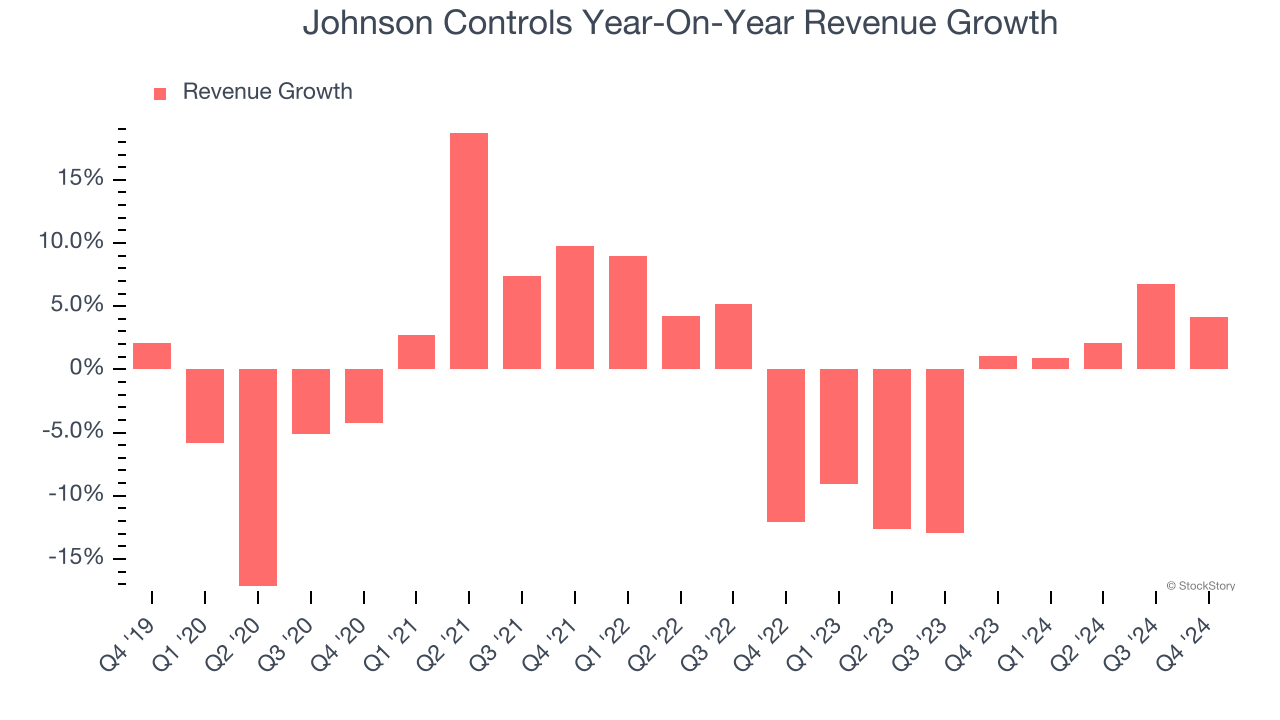
Johnson Controls also reports organic revenue, which strips out one-time events like acquisitions and currency fluctuations that don’t accurately reflect its fundamentals. Over the last two years, Johnson Controls’s organic revenue averaged 5.9% year-on-year growth. Because this number is better than its normal revenue growth, we can see that some mixture of divestitures and foreign exchange rates dampened its headline results. 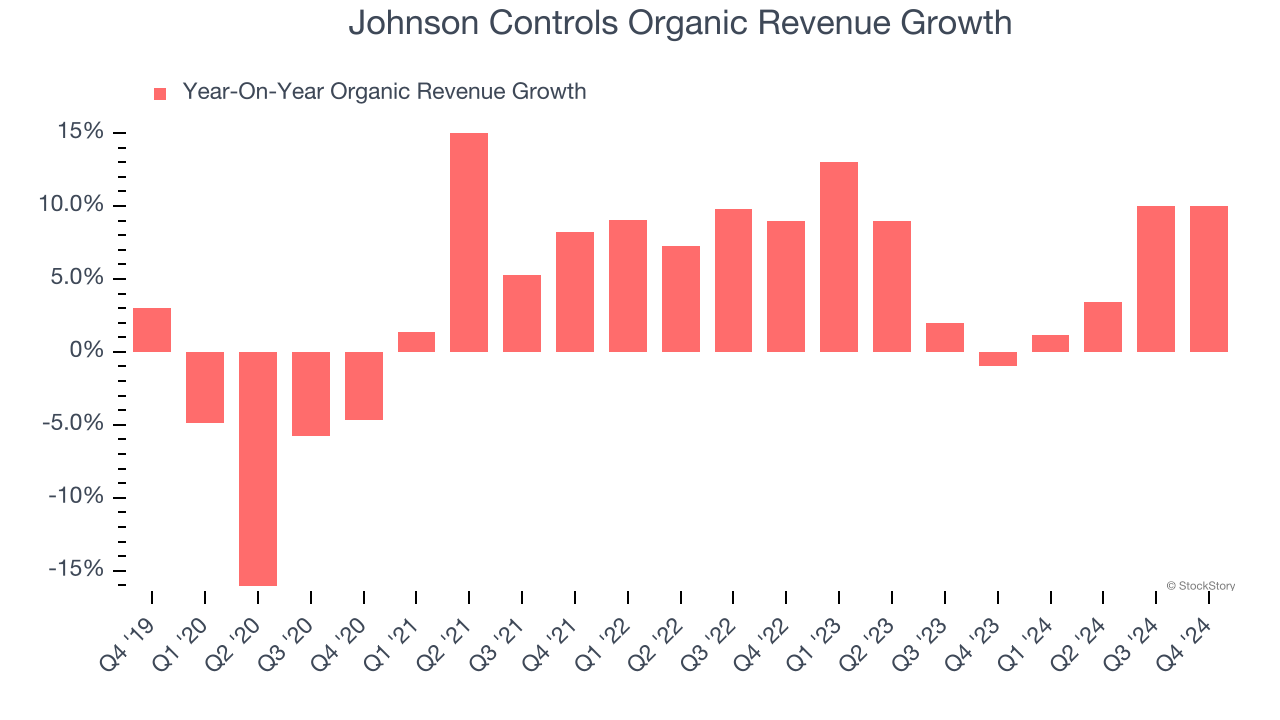
This quarter, Johnson Controls reported modest year-on-year revenue growth of 4.2% but beat Wall Street’s estimates by 2.7%.
Looking ahead, sell-side analysts expect revenue to grow 1.7% over the next 12 months. Although this projection indicates its newer products and services will spur better top-line performance, it is still below the sector average.
Today’s young investors won’t have read the timeless lessons in Gorilla Game: Picking Winners In High Technology because it was written more than 20 years ago when Microsoft and Apple were first establishing their supremacy. But if we apply the same principles, then enterprise software stocks leveraging their own generative AI capabilities may well be the Gorillas of the future. So, in that spirit, we are excited to present our Special Free Report on a profitable, fast-growing enterprise software stock that is already riding the automation wave and looking to catch the generative AI next.
Operating Margin
Johnson Controls has done a decent job managing its cost base over the last five years. The company has produced an average operating margin of 8%, higher than the broader industrials sector.
Looking at the trend in its profitability, Johnson Controls’s operating margin rose by 2.6 percentage points over the last five years, showing its efficiency has improved.
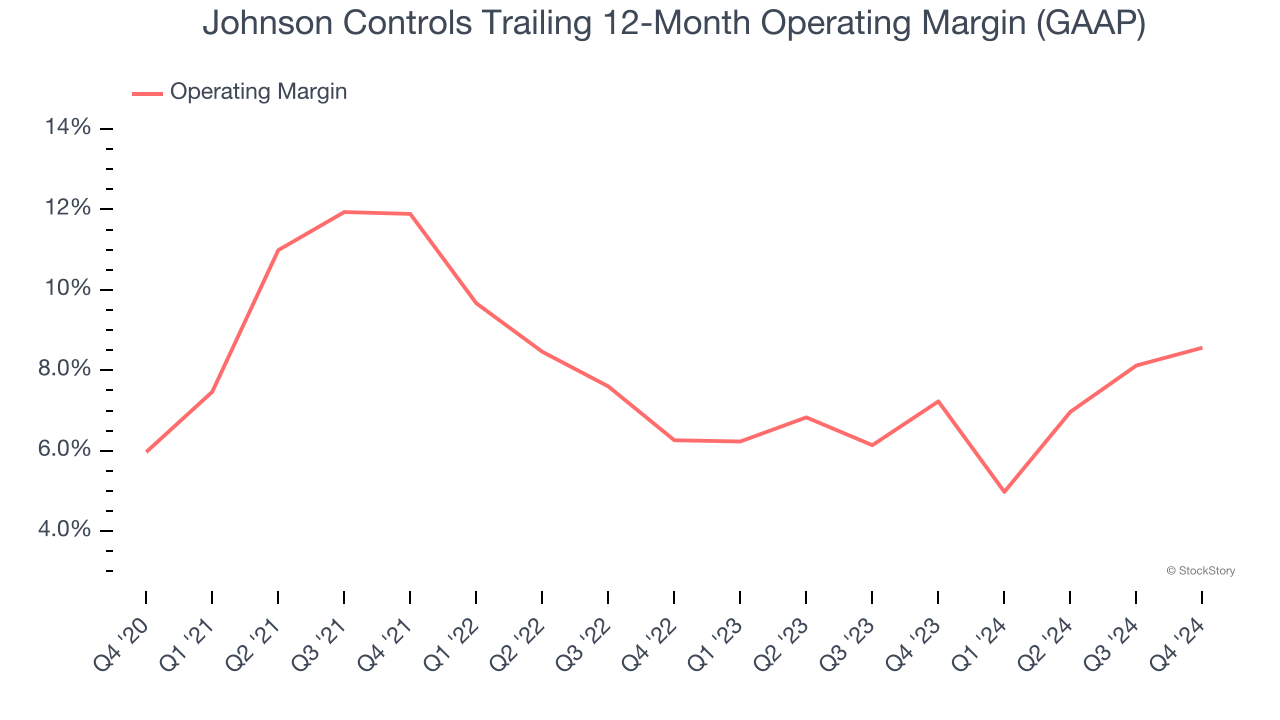
In Q4, Johnson Controls generated an operating profit margin of 9.7%, up 1.9 percentage points year on year. Since its gross margin expanded more than its operating margin, we can infer that leverage on its cost of sales was the primary driver behind the recently higher efficiency.
Earnings Per Share
Revenue trends explain a company’s historical growth, but the long-term change in earnings per share (EPS) points to the profitability of that growth – for example, a company could inflate its sales through excessive spending on advertising and promotions.
Johnson Controls’s EPS grew at a decent 9.7% compounded annual growth rate over the last five years, higher than its flat revenue. This tells us management responded to softer demand by adapting its cost structure.
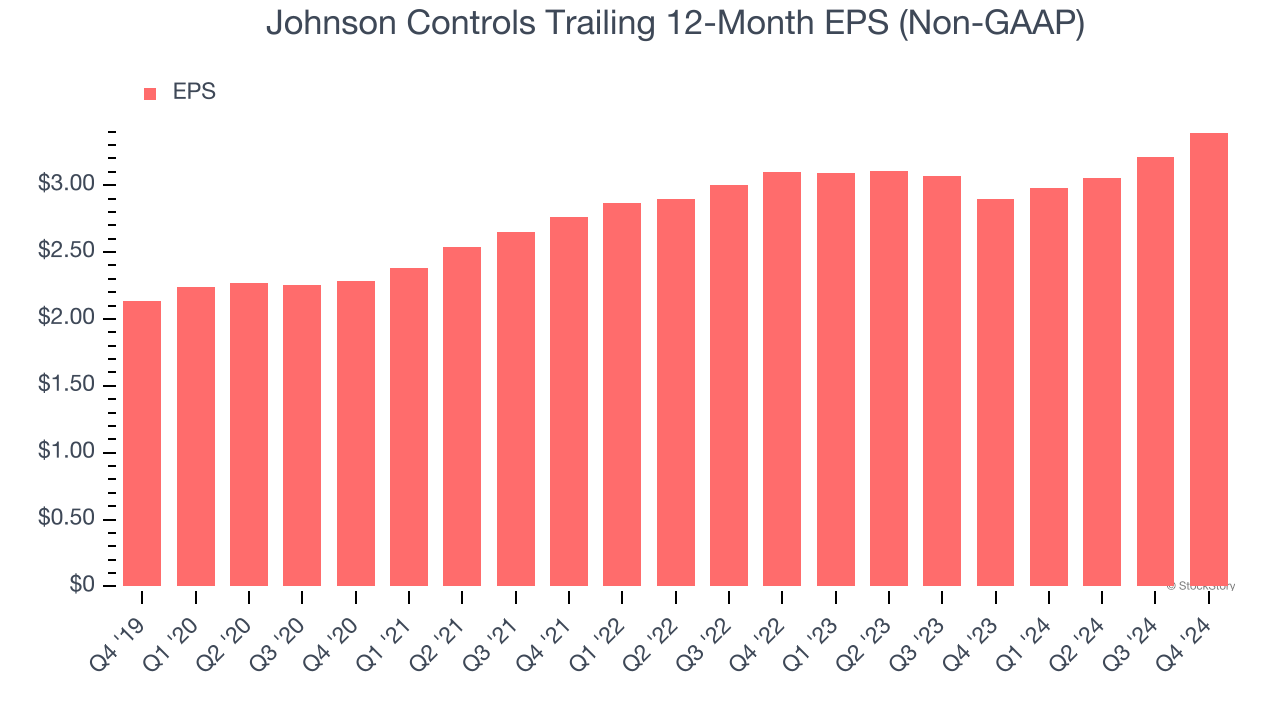
We can take a deeper look into Johnson Controls’s earnings quality to better understand the drivers of its performance. As we mentioned earlier, Johnson Controls’s operating margin expanded by 2.6 percentage points over the last five years. On top of that, its share count shrank by 14.1%. These are positive signs for shareholders because improving profitability and share buybacks turbocharge EPS growth relative to revenue growth. 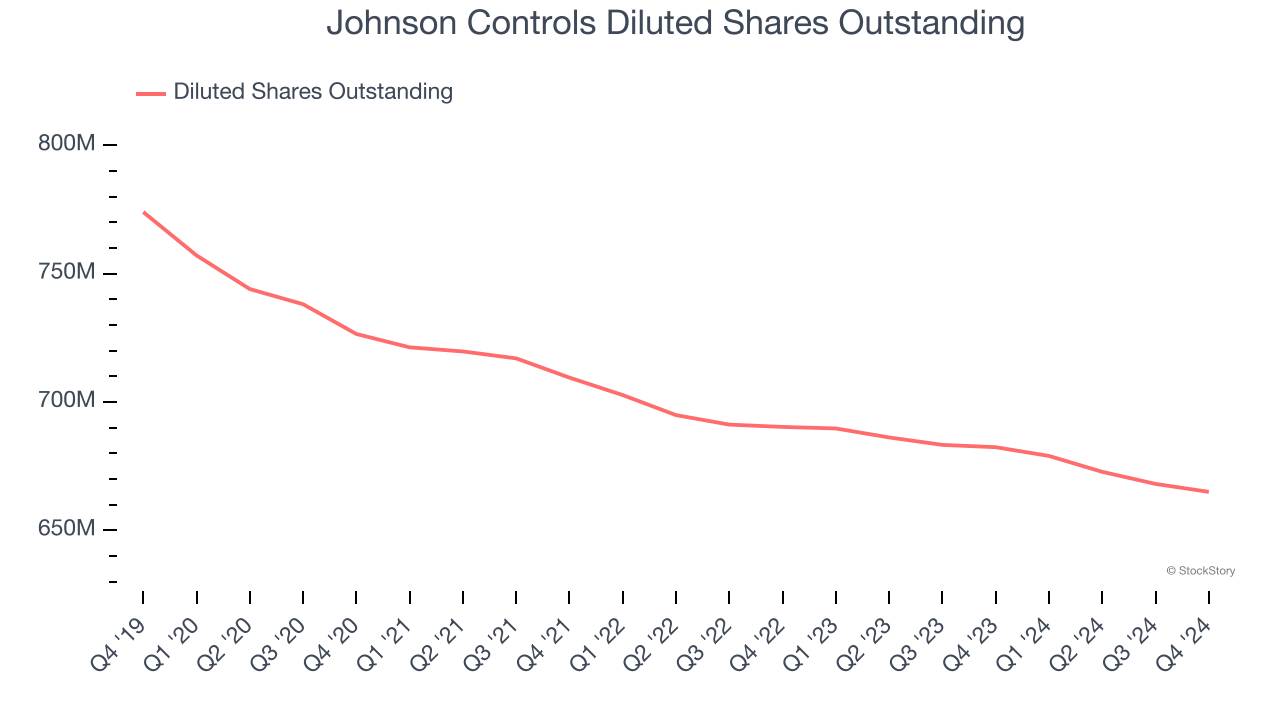
Like with revenue, we analyze EPS over a shorter period to see if we are missing a change in the business.
For Johnson Controls, its two-year annual EPS growth of 4.6% was lower than its five-year trend. We hope its growth can accelerate in the future.
In Q4, Johnson Controls reported EPS at $0.64, up from $0.46 in the same quarter last year. This print beat analysts’ estimates by 8.5%. Over the next 12 months, Wall Street expects Johnson Controls’s full-year EPS of $3.39 to grow 5.5%.
Key Takeaways from Johnson Controls’s Q4 Results
We were impressed by how significantly Johnson Controls blew past analysts’ organic revenue expectations this quarter. We were also glad its EPS guidance for next quarter came in higher than Wall Street’s estimates. Zooming out, we think this was a good quarter with some key areas of upside. The stock traded up 7.8% to $83.29 immediately following the results.
Johnson Controls put up rock-solid earnings, but one quarter doesn’t necessarily make the stock a buy. Let’s see if this is a good investment. The latest quarter does matter, but not nearly as much as longer-term fundamentals and valuation, when deciding if the stock is a buy. We cover that in our actionable full research report which you can read here, it’s free.
